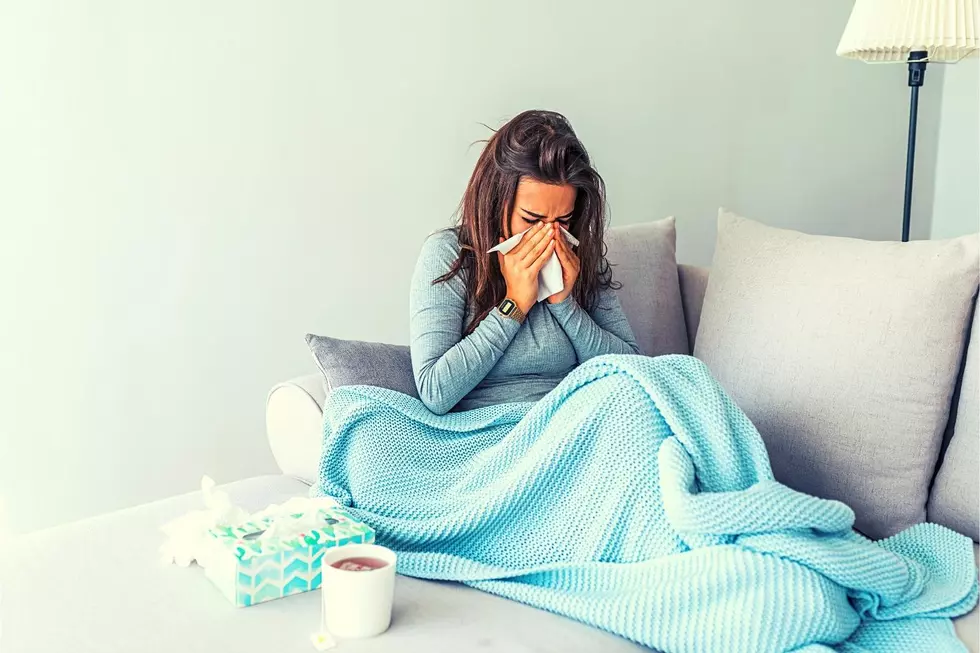
We’ll See These 7 Illnesses All Over Buffalo This Fall
Fall is officially here, bringing changing leaves, cozy sweaters, and everything pumpkin spice and nice. But let’s not forget what else the fall season tends to bring us - hacking, coughing, sneezing, and sniffles. Yup, Fall is here, alright.

Why do people tend to get more sick in the fall?
It’s not just an old wives tale - the chilly weather that comes with fall temperatures really does make us more likely to get sick. This happens for mainly two reasons:
- The colder weather can suppress our immune system, making us more susceptible to catching something nasty.
- Colder weather means more time spent indoors, which means we’re in closer contact with people who may be sick and more likely to have their germs spread to us.
But no big deal - most of us can handle a few days of sniffles and sneezes this fall, right?
Not so fast. Catching a minor illness could quickly lead to severe complications for young children, the elderly, and others with poor immune systems.
Here are some of the most common illnesses that’ll be at their peak this fall in Buffalo, along with a few tips on avoiding catching or spreading them.
Allergies
The fall season brings out ragweed and mold, which can bring out sneezes and sniffles for some of us who are allergic. Also, the dust that’s been accumulating in your heat vents all summer? Watch what happens when you turn on your heat for the first time.
Symptoms to look for:
- Sneezing
- Itchy eyes, nose, and mouth
- Runny and/or stuffy nose
- Red, watery eyes
How to avoid it:
- Keep an eye on daily pollen counts in your area
- Shower after spending time outdoors
- Keep your home and car windows closed
- Look into an over-the-counter anti-histamine like Benadryl or Claritin
Common Cold
‘Tis the season to catch a cold this fall. Usually, the common cold isn’t too bad - just annoying - but some cases can last from a few days to a few weeks.
Symptoms to look for:
- Congested or runny nose
- Coughing
- Sneezing
- Sore throat
- Headaches
How to avoid it:
- Wash your hands consistently
- Cover your mouth when coughing or sneezing (remember the elbow trick?)
- Limit time in crowded areas
- Keep the immune system at its peak by sleeping well and eating right
Seasonal Flu
Ahhh, yes, the flu. How we missed you (not). The flu is most prevalent during the fall and can lead to more serious illnesses like bronchitis or pneumonia if not treated.
Symptoms to look for:
- Chills
- Fever
- Fatigue
- Headache
- Nausea, vomiting, or diarrhea
- Sore throat
How to avoid it:
- Same rules as the flu
- Look into getting a flu shot at your doctor’s office or local pharmacy.
Hand, Foot, And Mouth Disease
Back to school means back to germ-infested classrooms. For younger children, HFDM can be extremely common this time of year and can lead to mild symptoms that last over a week.
Symptoms to look for:
- Fever
- Flu-like symptoms
- Mouth sores
- Skin rash
How to avoid it:
- Wash your hands often (especially after you change their diaper)
- Teach your children early good hand washing etiquette
Norovirus
Oh man, this one is not fun. You may think you have food poisoning due to your symptoms, but norovirus rages during the fall and winter seasons and is extremely contagious.
Symptoms to look for:
- Diahrrea
- Vomiting
- Abdominal cramps
- Nausea
How to avoid it:
- Wash your hands frequently
- Clean and disinfect your bathroom regularly
- Don’t eat food prepared by someone who is sick
Arthritis
Technically, those with arthritis can have flare-ups any time of year, but in the colder weather, it’s much more prominent.
Symptoms to look for:
- Pain, swelling, stiffness, and/or tenderness in the joints
- Fatigue
How to avoid it:
- Live a healthy lifestyle, including a nutritious diet and exercise
- Discuss treatment options with your doctor
Covid-19
Public spaces have opened, masks are off, and the pandemic is declared “over,” but that doesn’t mean that covid isn’t still out there. Now that we’ll spend more time indoors in close quarters with people, you should stay on guard.
Symptoms to look for:
- Fever
- Fatigue
- Cough
- Loss of taste or smell
- Sore throat
- Runny nose
How to avoid it:
- Wear a mask
- Keep your distance in crowded places
- Get the Covid vaccine and stay updated with your boosters
Stay healthy this fall, Buffalo!
Even if catching one of these common fall illnesses doesn’t seem like a massive deal to you, it could be much more dangerous for the more vulnerable population.
Let’s do our best to stay healthy this fall and keep each other safe.
25 Things You Need To Do in Buffalo This 2022 Fall Season
More From 92.9 WBUF









